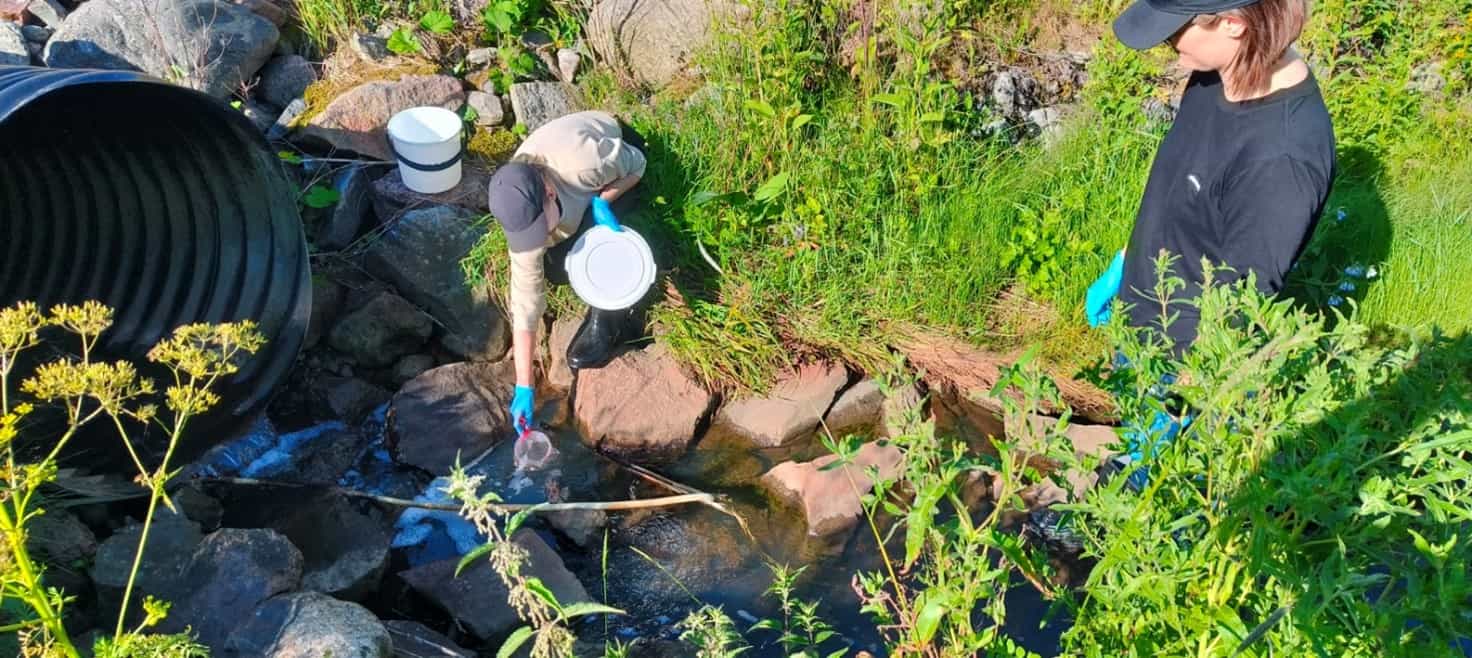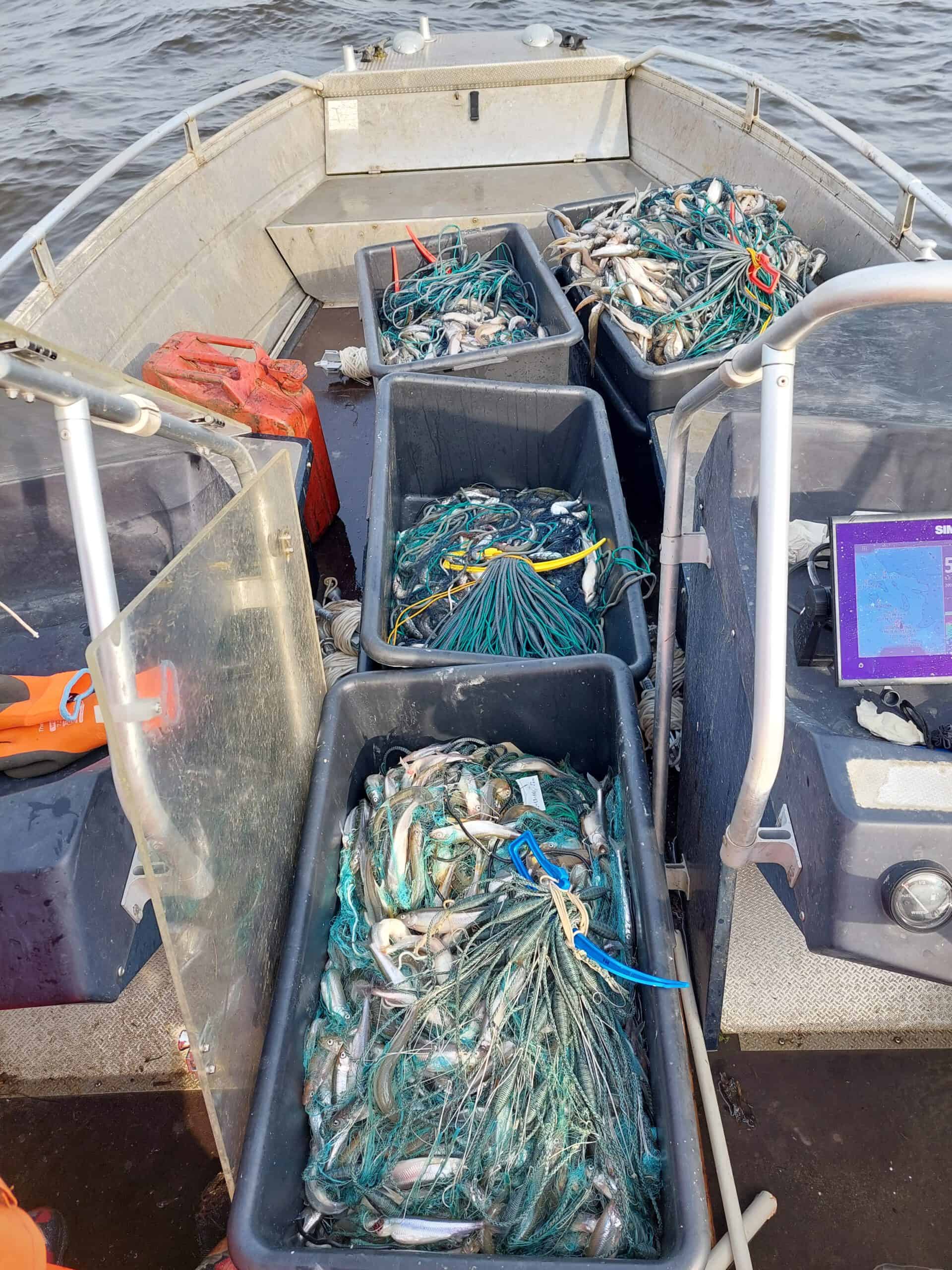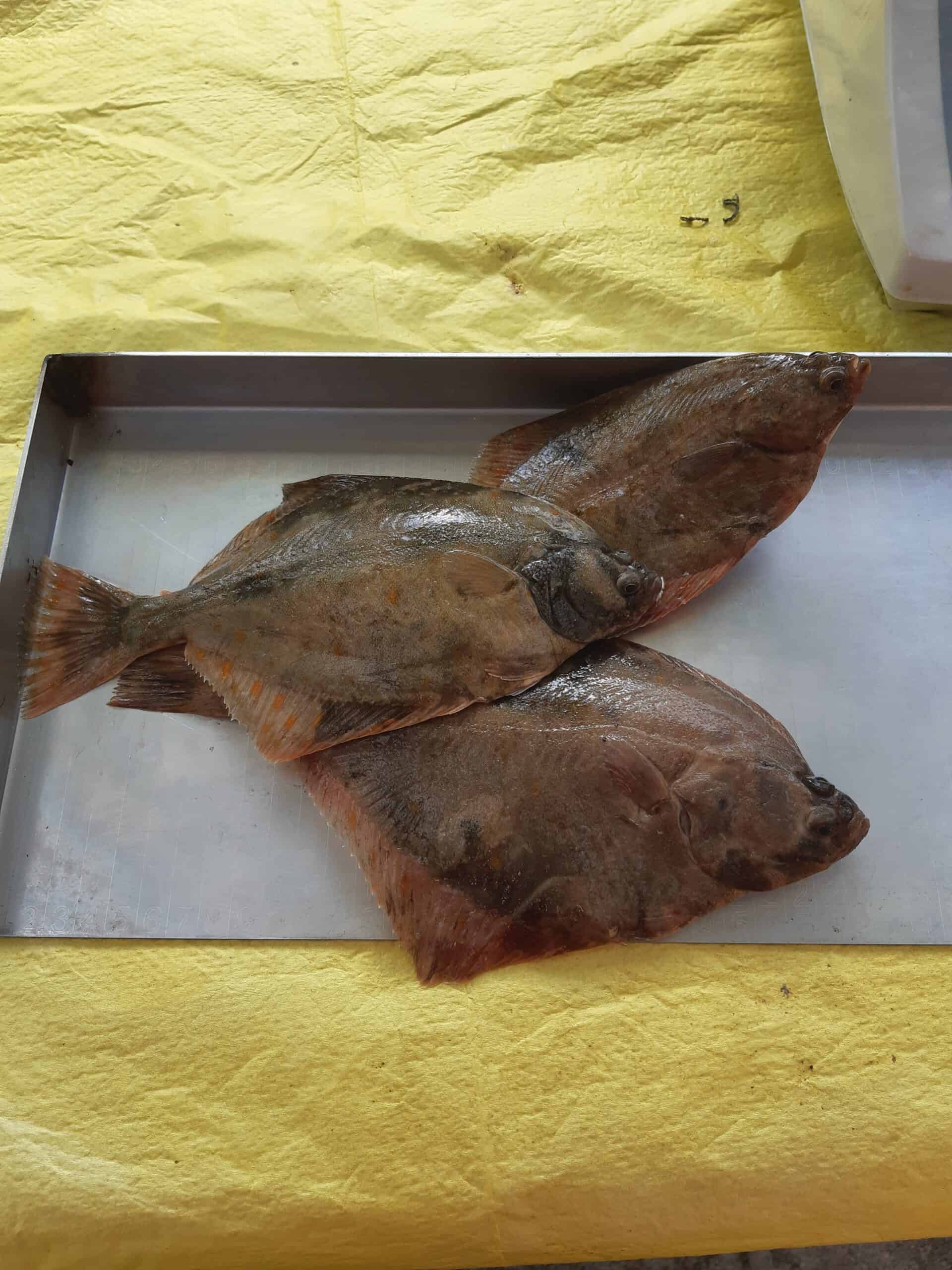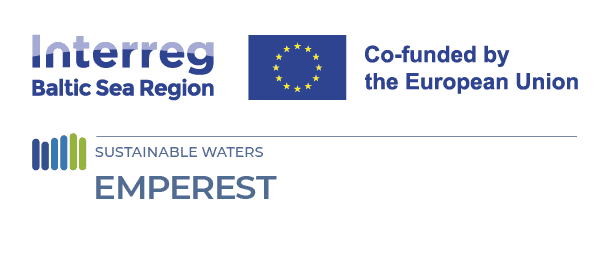
Taking samples in Finland, Estonia and Germany to trace PFAS in water
08 October 2024
To enrich and complement this data collection, EMPEREST is conducting own set of monitoring activities to get a more comprehensive picture about PFAS environmental presence. In particular, the EMPEREST partners Turku University of Applied Sciences (TUAS), University of Tartu (UT) and Technical University of Berlin (TUB) are collecting water and biota samples in Finland, biota samples in Estonia, and water samples in Germany respectively. They will analyse the samples for over 50 PFAS compounds, and these results will be used to prepare the EMPEREST project’s output “Methodological recommendations for monitoring and assessment of PFAS in the aquatic environment”.
PFAS in creeks, rivers, sea, and wildlife | Finland
In Finland, the Turku University of Applied Sciences is collecting PFAS water samples from urban creeks, rivers, sea, and stormwater system of the City of Turku. The goal here is not only to provide information about the presence and concentrations of PFAS in the Turku city area, but to ultimately try to make an estimation of the PFAS load of the urban area to the Baltic Sea. In addition to water samples, TUAS also aims to analyze PFAS from perch fished from the coast, to see how the PFAS in wildlife compare to those found in the water samples.
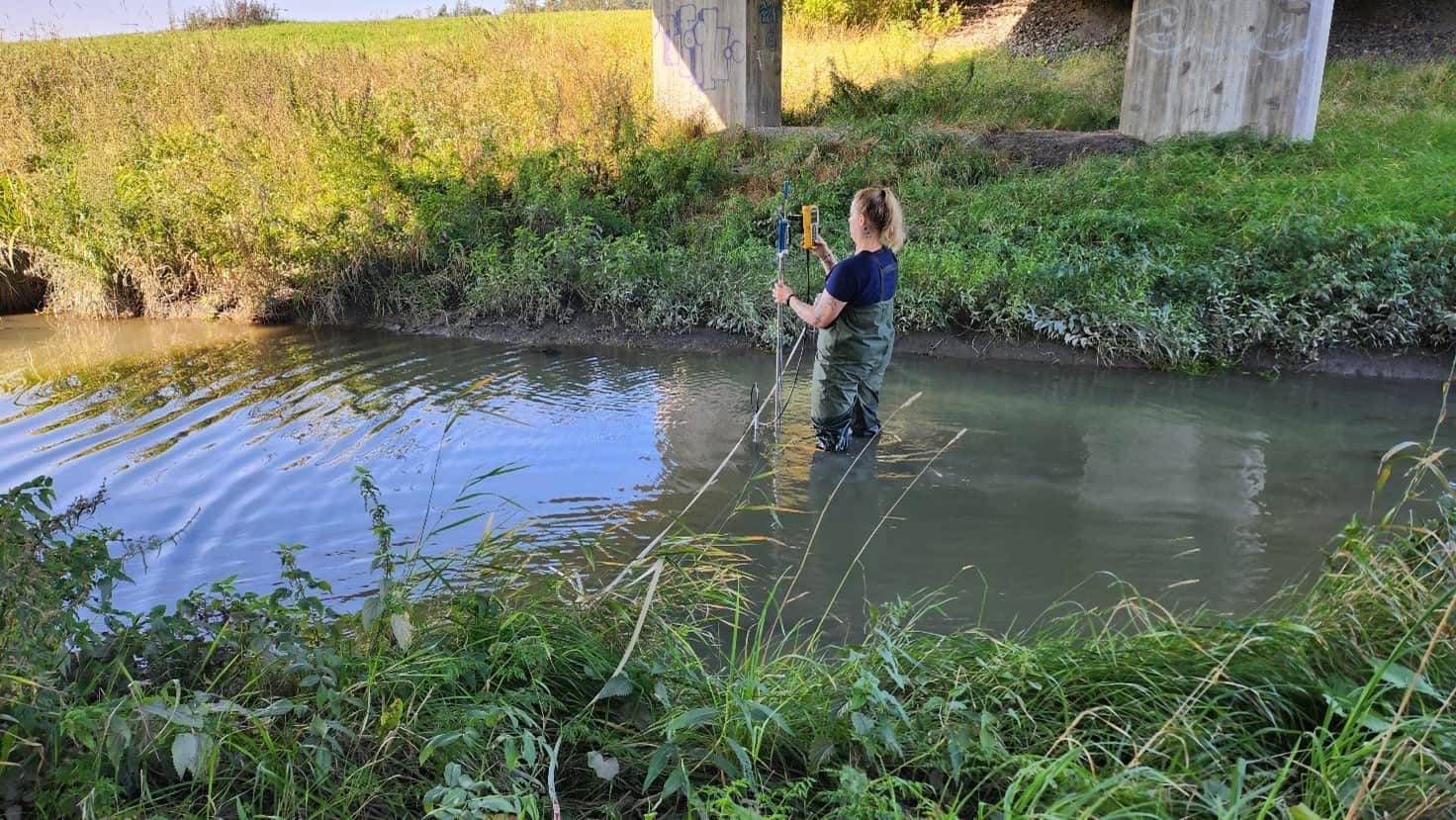
Energy and environmental engineering student Mia Aitoukazzamane measuring the water flow after sampling at Jaaninoja, Turku. Photo: Riikka Vainio
The first samples were taken in July from urban creeks, rivers and the sea near the coast. Students of TUAS have been assisting in the sample collection and measuring the flow in the streams. The flow measurements will be used later to try to estimate the PFAS load from the streams into the sea. The sampling campaign will continue during autumn, to see if there are differences in the concentrations and profiles of PFAS during different seasons (summer and autumn) and during different flows, meaning dry and rainy weather. TUAS also wishes to collect stormwater samples from the city area to compliment the samples from the rivers and creeks. This means going out to collect samples during rain, so we all wish for a rainy autumn in Turku city.
PFAS in fish samples | Estonia
The collection of fish samples from the Gulf of Finland and the Gulf of Liivi near the Estonian coast represents a critical effort in understanding the presence and distribution of persistent micropollutants, particularly PFAS.
The sampling in Estonia has been conducted at ten key sites: Kõiguste, Vilsandi, Pärnu Bay, Käsmu, Vaindloo, Matsalu, Saunja, Kihnu, Saarnaki, and Nõva. These locations were chosen due to their ecological significance and the diversity of fish species they support, reflecting both coastal and more open marine environments. Sites such as Kõiguste, Vilsandi, and Pärnu Bay, which are characterized by their diverse habitats and proximity to both human activity and natural reserves, have proven fruitful for the collection of these specimens. Furthermore, the varied hydrological conditions across the sampling sites – ranging from the sheltered bays of Matsalu and Saunja to the more exposed coasts of Käsmu and Vaindloo – enable a comprehensive examination of how different environmental factors may influence PFAS contamination in these waters.

Collecting fish samples. Photo: Kirke Paris
The sampling has progressed successfully, with 16 specimens of the same length class collected from female fish. Researchers have obtained 8 perch (Perca fluviatilis), 6 herring (Clupea harengus), and 2 flounder (Platichthys flesus) samples, establishing the basis for an investigation into potential PFAS contamination. The selection of female specimens within a similar length class was intentional, providing a controlled sample that can yield more reliable data on contaminant accumulation.
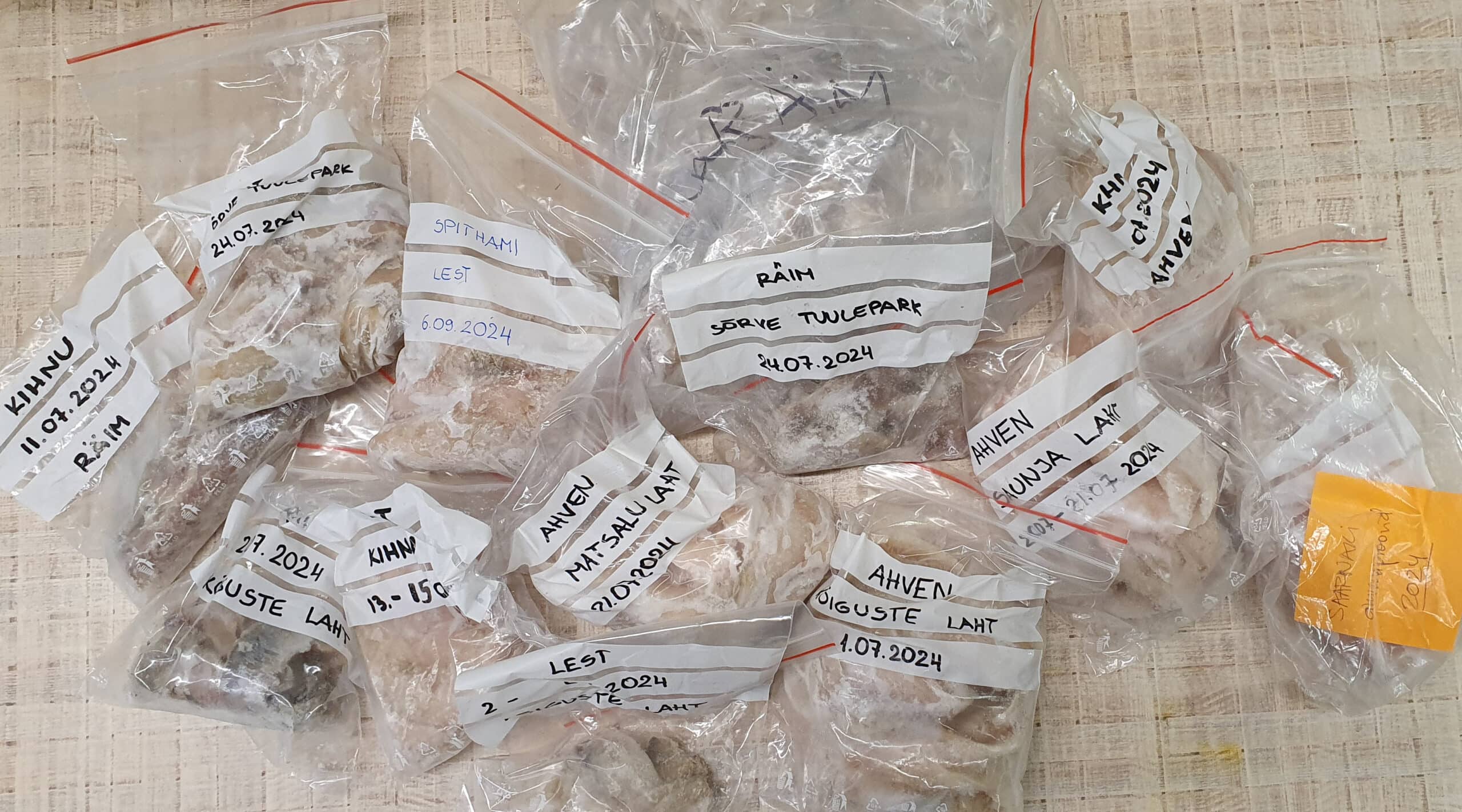
Frozen fish samples. Photo: Siiri Velling
As the sampling progresses, the collected fish specimens will be subject to advanced chemical analysis techniques to detect and quantify the presence of 50 PFAS compounds, offering insights into the level and scope of contamination in the region’s marine fauna.
The ongoing collection and analysis of fish samples from the Gulf of Finland and the Gulf of Liivi is a significant step toward assessing the environmental impact of PFAS contamination in the Baltic Sea region.
PFAS in the Baltic Sea and rivers | Germany
The team from the Urban Water Management Department of the TU Berlin (in short TUB team) focused on water samples from the estuaries of selected rivers to detect PFAS inputs in the Baltic Sea, from several points on the German coast and the German Exclusive Economic Zone of BS and from one river in Berlin.
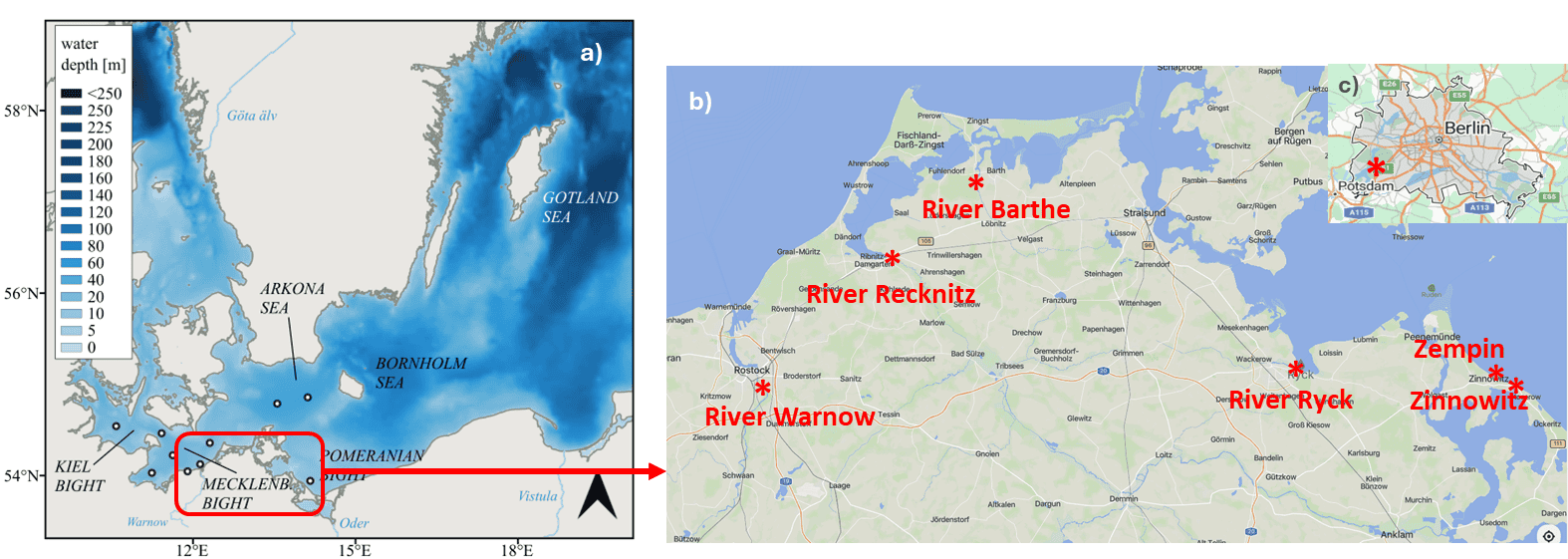
Location of the TUB sampling sites in: a) the German coast and EEZ of the Baltic Sea, b) the river estuaries in Mecklenburg-Western Pommenrania, the Zinnowitz pier and the Zempin beach, c) the river Havel, Berlin.
The 19 surface water samples were taken during the period July – September and the sampling will be repeated in February 2025 to detect seasonal changes. The start was in the middle of July 2024, were the associates of the TUB team Julia Stein and Philipp Lau travelled in Mecklenburg-Western Pomerania region and gathered samples from the estuaries of the rivers Warnow, Recknitz, Barthe and Ryck. The samples were taken with a canoe, by using a RUTTNER water sampler (2L volume).
The Leibniz Institute for Baltic Sea Research Warnemünde (IOW) supported TUB and carried out the sampling in the Baltic Sea. The water samples were obtained from the coastal site Heiligendamm pier near Rostock in the German federal state Mecklenburg-Western Pomerania as well as from sites at Kiel Bight, Mecklenburg Bight, Arkona Sea and the Pomeranian Bight in the German Exclusive Economic Zone. The samples were obtained in the time from the end of July to the middle of August 2024.
At Heiligendamm pier the samples were collected with a pre-rinsed bucket at the top of the pier which extends about 160 m into the sea. The surface water samples from the German EEZ were obtained during the monitoring cruise EMB 346 operated by the IOW aboard R/V Elisabeth Mann Borgese. The sampling was conducted in the beginning-middle of August using a carousel water sampler, which was mounted with 13 x 5 L Free Flow sampling bottles (Hydrobios, Germany) and a pumped CTD system (SBE 911plus, Seabird Electronics, USA) which was used to measure associated parameters.
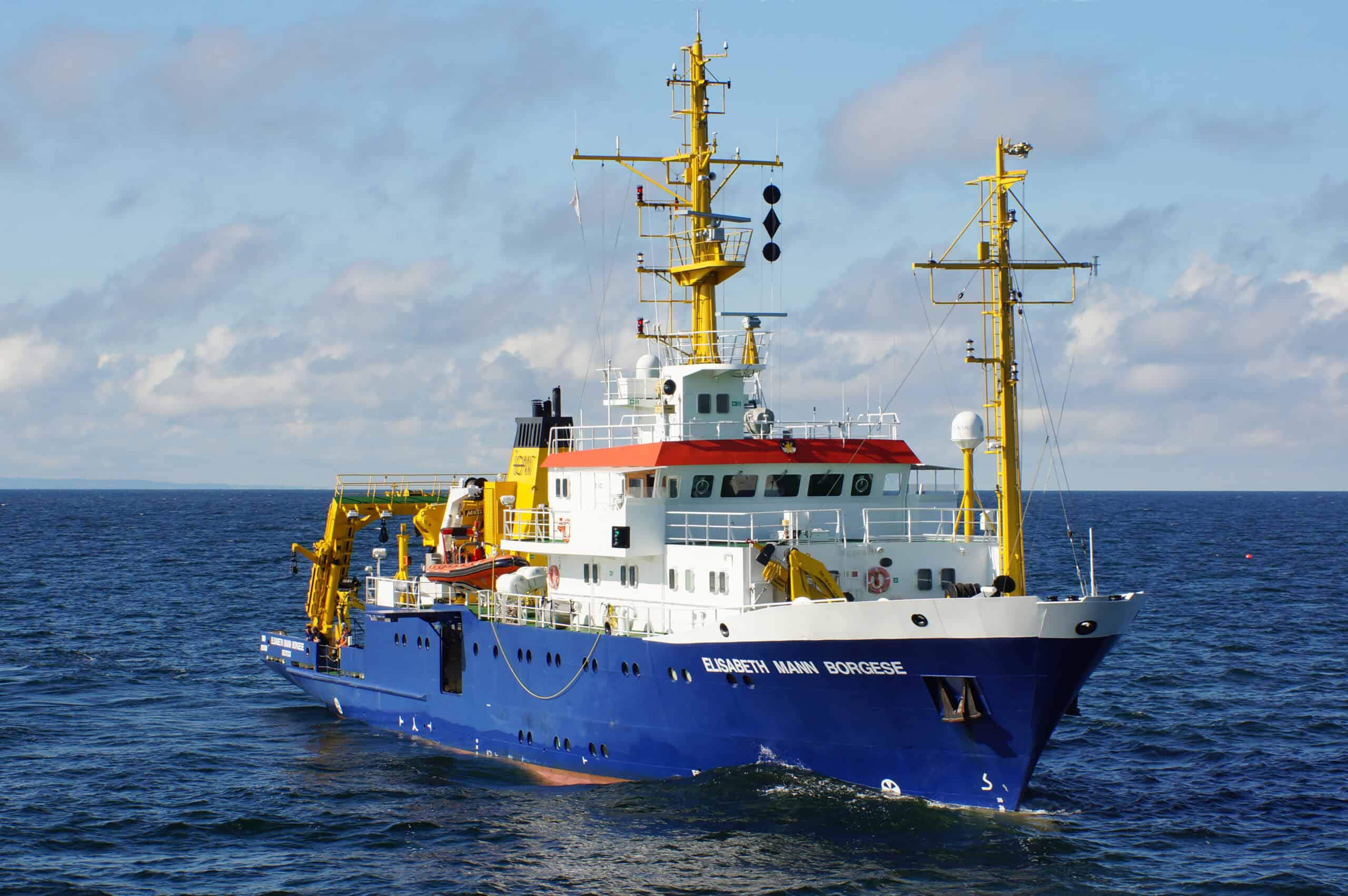
Research Vessel “Elisabeth Mann Borgese”. Photo: IOW.
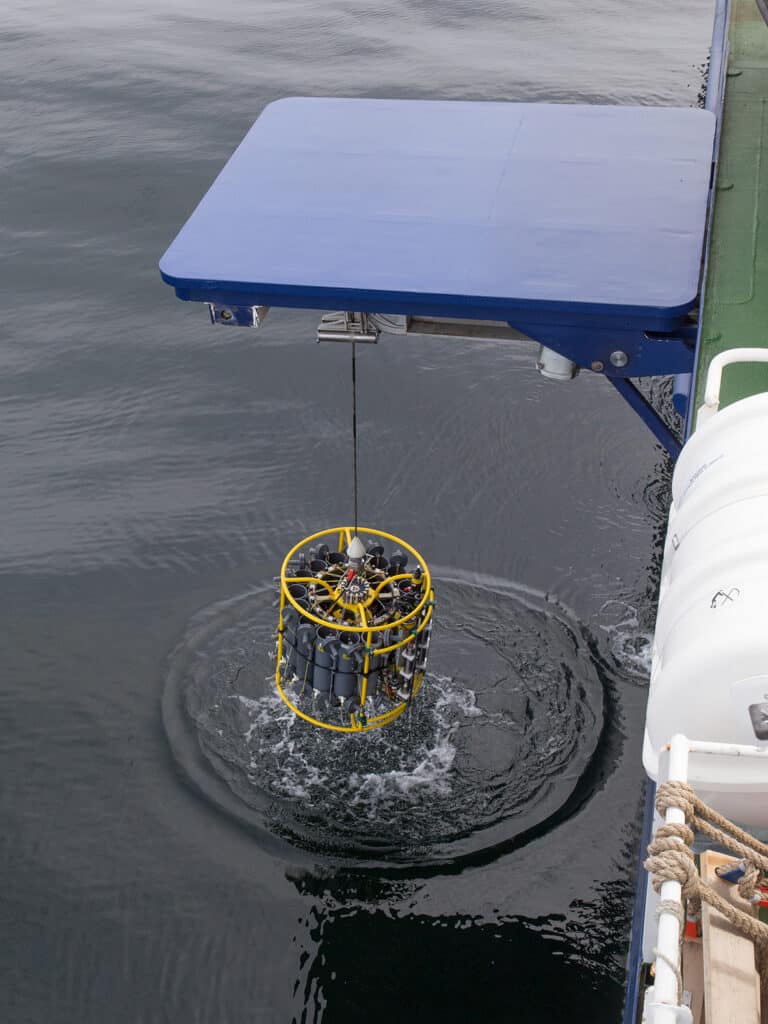
Carousel water sampler equipped with a pumped CTD system. Photo: IOW / S. Kube
By the end of August, a sample was taken by TUB from the river Havel in Berlin. In addition, by the end of September several samples were taken from Zinnowitz pier at different distances from the shore (0-300 m) to investigate the spatial distribution of PFAS at a specific location, and at the beach of Zempin. At all samplings of TUB team, the RUTTNER water sampler (2 L volume) was used.
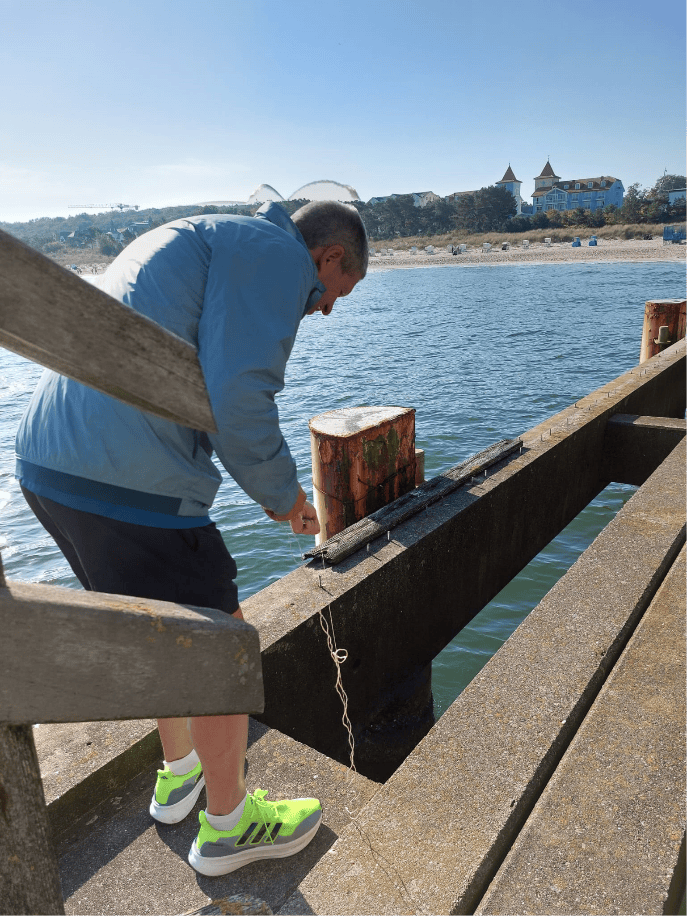
Matthias Barjenbruch is taking a sample in Zinnowitz pier.
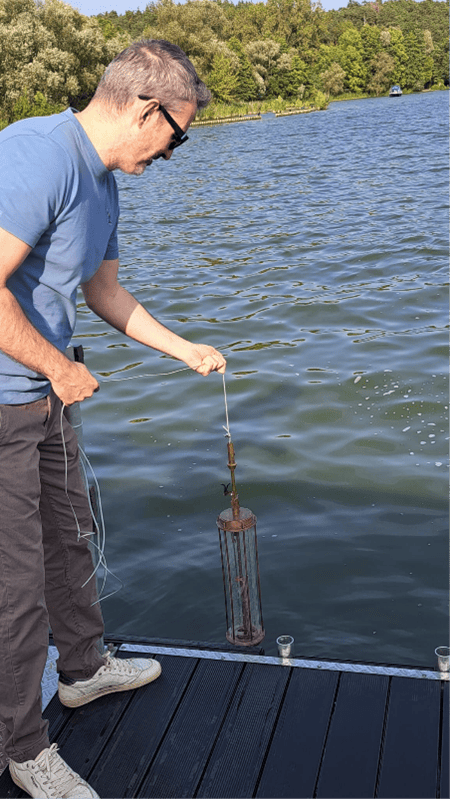
Nikolaos Tzoupanos is taking a sample in river Havel with the RUTTNER water sampler.
In most of the samples, additional parameters such as pH, conductivity, COD, TSS, nitrogen parameters, total phosphorus, were determined by the TUB team on site and at the own laboratory (Department of Urban Water Management).
This joint transnational effort in acquiring and processing samples strongly supports the validation process of the methodological recommendations for PFAS monitoring. These recommendations are prepared by HELCOM in the framework of the EMPEREST project, benefiting the whole Baltic Sea Region.
Article written by: Riikka Vainio (TUAS), Siiri Velling (UT), Nikolaos Tzoupanos (TUB), Mariia Andreeva (UBC SCC)






